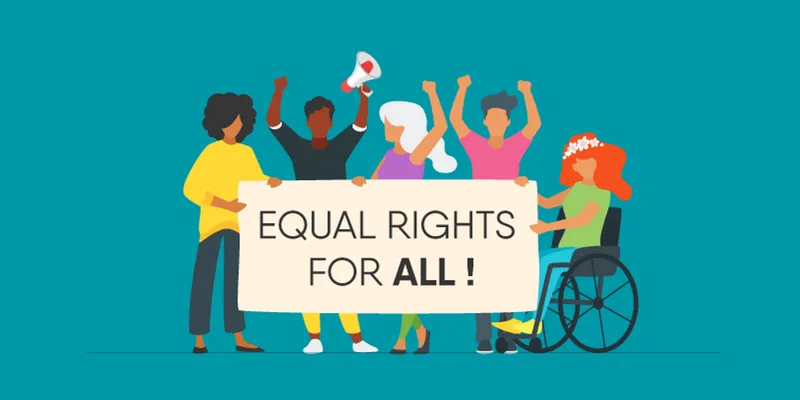Intersectionality – approaching diversity and inclusion through a holistic lens
The purpose of intersectionality as a theory is to understand how overlapping categories of identity impact individuals and institutions and take these cohesive identities into account when working towards equality and empowering them.
In the early 1900s, when women started demanding an equal right for a number of issues – starting from the right to vote, to right to apply for jobs or even the right to education – they were largely framed as women’s issues.
It took years of hard work to raise awareness around them and help people see them as innate human rights issues. The work is still in progress, but we certainly have come a long way.

As a society, we are gradually evolving to be more sensitive and attuned to the needs of a broader audience. The last two decades have witnessed heightened awareness and acknowledgment of struggles and rights of people with disabilities. And only in the last few years we have started talking about issues and hardships faced by people from the LGBT+ community.
Interestingly, while all of these are varied aspects of diversity, we tend to look at them in silos, independent of one another. Diversity is a broad spectrum which includes race, ethnicity, closer home in India, caste and religion and they are all looked at as distinct points of differentiation amongst people without any sort of overlap.
But in reality, as individuals, we are a subtotal of all these identities. Our identities, as unique as they are, exhibit an amalgam of these varied layers such as gender, caste, religion, ethnicity, class and many such social constructs. Could this then have an impact on how we approach the concepts of diversity and inclusion – building fair and just workplaces where everyone has an opportunity to thrive?
This is where the concept of intersectionality comes in. Simply put, intersectionality is combining all the various aspects of our identities together and recognising individuals as a whole.
The purpose of intersectionality as a theory is to understand how overlapping categories of identity impact individuals and institutions and take these cohesive identities into account when working towards equality and empowering them.
To make it simpler to understand, here’s an example – a woman with vision impairment who comes from a rural village in India from a certain caste faces many sorts of discrimination, caste discrimination, gender issues and also hardships of being a person with disability. Thus, this theory provides more wholesome and realistic conceptual framework to appreciate the fact that people can be impacted and disadvantaged by a multiple aspect of their identities, creating even more challenges for them.
‘The theory of intersectionality’ was coined by Kimberle’ Crenshaw in 1989, to describe how race, class, gender, and other individual characteristics “intersect” with one another and overlap, specifically to expand the contours of the feminist movement.
Over a period of time, all other aspects of oppressions and struggles were included under Intersectionality. However, the concept remained largely unheard of, until 2015, when Oxford English Dictionary added it in its repertoire. It gained further attention during the 2017 Women’s March, where it was highlighted that women’s “intersecting identities” meant that they were “impacted by a multitude of social justice and human rights issues.”
Today, however, we know that intersectionality doesn’t remain true for women only. It’s something that’s becoming more and more popular and relevant as we start to explore our unified identities. Examples are endless – A man of colour who is gay or a person with hearing impairment who is Asian and a trans person who is also a person with disability.
As we move towards a more progressive society, we need to start looking at diversity and inclusion more holistically and stop compartmentalising each of the issues. As we embrace women’s day and call out the need to stand for equality, we all need to acknowledge the importance of intersectionality and work towards a more cohesive society by understanding these overlaps in our identities.
As an organisation too, it requires careful consideration to ensure that on the journey towards equality we are guided by this powerful notion of intersectionality. To appreciate that a multitude of challenges could coexist for each of us in itself is a huge step forward. This understanding will help us come up with more nuanced, thoughtful and humane practices to create a conducive environment for all our people. After all, that is the whole point of being a diverse and inclusive organisation.








